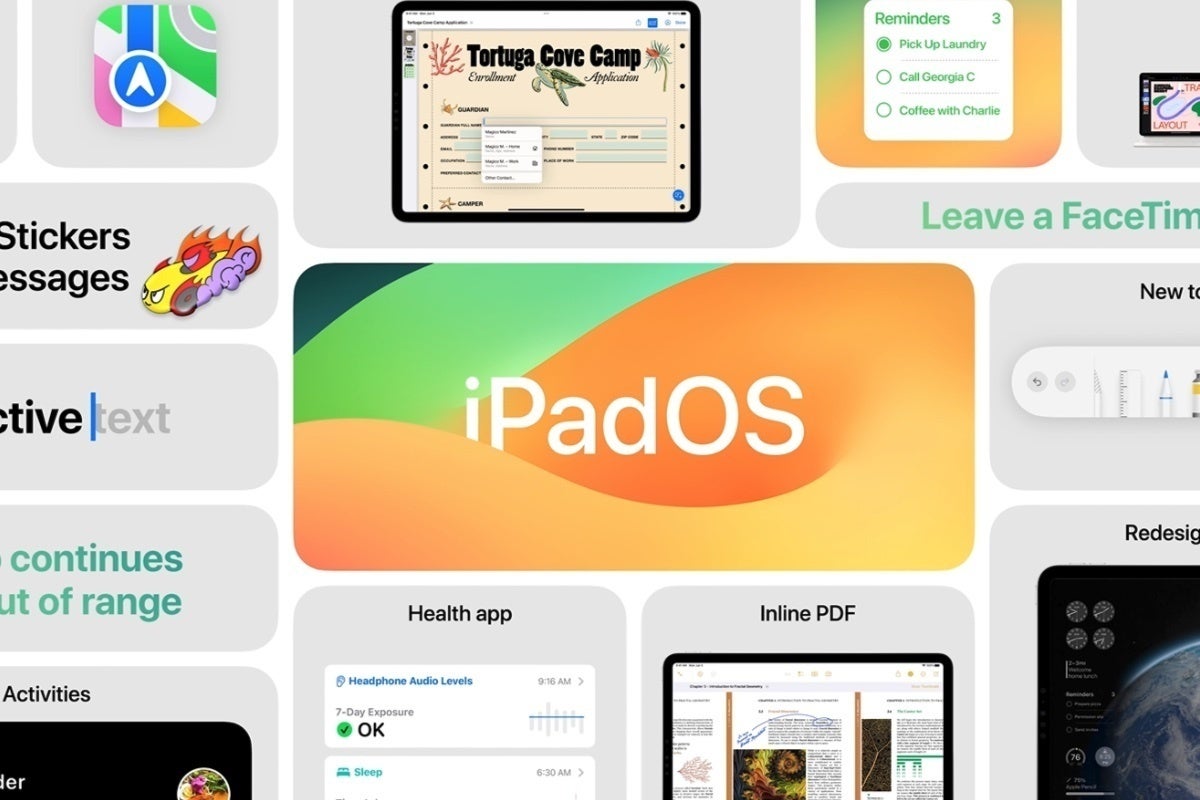Currently available in beta, iPadOS 17 at first glance doesn’t deliver the same magnitude of productivity improvements we saw in the previous version of the tablet OS. Still, there are some useful additions, many of which are shared across all relevant Apple platforms.
Stage Manager is a lot more flexible
Stage Manager now lets you resize app windows. It isn’t perfect — you don’t have granular control of application window size, but the system does seem to give you more flexibility in the sizes available to you. To resize a window, just grab it by the corner and shuffle it into shape.
You’ll also experience more flexibility with app windows in Stage Manager. This lets you position windows more where you want them to be. You can also decide how much (or how little) those windows should overlap — and even put four windows on your screen at the same time.
External camera support means that when you connect your iPad to an external display, Stage Manager will let you use that display’s built-in camera. Finally, if working with an external keyboard, you can shift-click an application icon to open it in your current stage.
PDF handling improvements
iPads are a great way to explore PDF documents. In iPadOS 17, Apple improves the experience with a handful of useful features:
- PDFs can appear full width, which makes them easier to read or annotate.
- On-device machine learning will identify document fields in PDFs, so you can enter things such as names, addresses, and other information into the fields.
- Apple has tweaked PDF handling on its Notes app. You can now flip through PDFs in a Note, mark them up and collaborate on documents.
- You can also create links between different Notes. Just tap the More item and select Create Link to do so. Use this to connect related notes together.
These are small improvements, but the built-in AI-assisted Autofill will be of great use to anyone working with the format.
Separate work from home with Safari Profiles
Apple changed our relationship with Safari with the introduction of Tabs. These let users create topic-driven collections of web pages that were made available across all your devices. This year, the company has introduced another feature: Safari Profiles. The idea is to help personalize the browser for what you need. You might set up one Profile for work and another for Personal browsing sessions. This helps clarify your browsing habits as each profile has its own history, cookies, Tab groups and Favorites collections.
- New profiles can be created in System Settings>Safari.
- Scroll down the page and just under the Tabs section you’ll find a new Profiles area.
- Tap New Profile to give it a name and icon and set Favorites and New Tabs preferences.
- To switch between active Profiles, open the tabs column and scroll to the bottom of the list to find the profile setting.
Another potentially useful improvement across all Apple’s devices is Private Browsing, which you can now lock with Face or Touch ID. This also removes trackers when browsing in this mode.
Interactive widgets, also on the Lock Screen
Apple is improving widgets across its platforms, including iPads. If developers choose to support it, these are now fully interactive, so you can get things done without opening the host app. You can’t do everything here, but for clicking radio buttons, turning HomeKit devices on or off, or playing music this is useful. More useful is that interactive widgets can also be made available on the Lock Screen — just tap and hold the Lock Screen to add these there.
Freeform gains Follow Along
Apple’s Freeform app now has a new feature called Follow Along. This lets all the users in a group see what another user is viewing on screen, which can be helpful when managing large projects. New drawing tools including watercolors, shape recognition, and fountain pens have also been added. You’ll also find support for hover, tilt, and snap to shape; and the ability to add connection lines and new shapes to any object. You can change the shape of an object using an item in the More item.
A much smarter keyboard
If you work with an iPad, you’ll welcome the keyboard improvements. These include a noticeably improved version of autocorrect, while inline predictive text means you can finish sentences with a tap. Speech recognition in Dictation has also been improved. While these tweaks may feel less exciting, they will make a huge difference to what you get done during your day.
Which iPads are supported?
iPadOS 17 supports the following iPads:
- iPad Pro (2nd generation and later)
- iPad Air (3rd generation and later)
- iPad (6th generation and later)
- iPad mini (5th generation and later)
No doubt users will come across additional improvements that help you get more done on an iPad. Do let me know what stands out for you.
Please follow me on Mastodon, or join me in the AppleHolic’s bar & grill and Apple Discussions groups on MeWe.






